Sweetness Of The Analogue Sound – Hagerman Tuba Amplifier Review
Hagerman Tuba is a very pragmatic Tube Based Amplifier, priced at 650 USD. It is designed to drive Grado and Sennheiser but also Audeze and Beyerdynamic, and it has a 5 or 35 OHM Output impedance making it work less well with IEMs than with headphones. There’s a good amount of power, and good clean voltage, as it has 350mW at 32 OHM, and 7VRMS, so it will be compared to Feliks Echo, Aune S6 PRO, and Chord Mojo. Since it is meant for Grado and Sennheiser, it will be paired with Sennheiser HD 660S, Grado SR80e, and with Beyerdynamic Amiron.
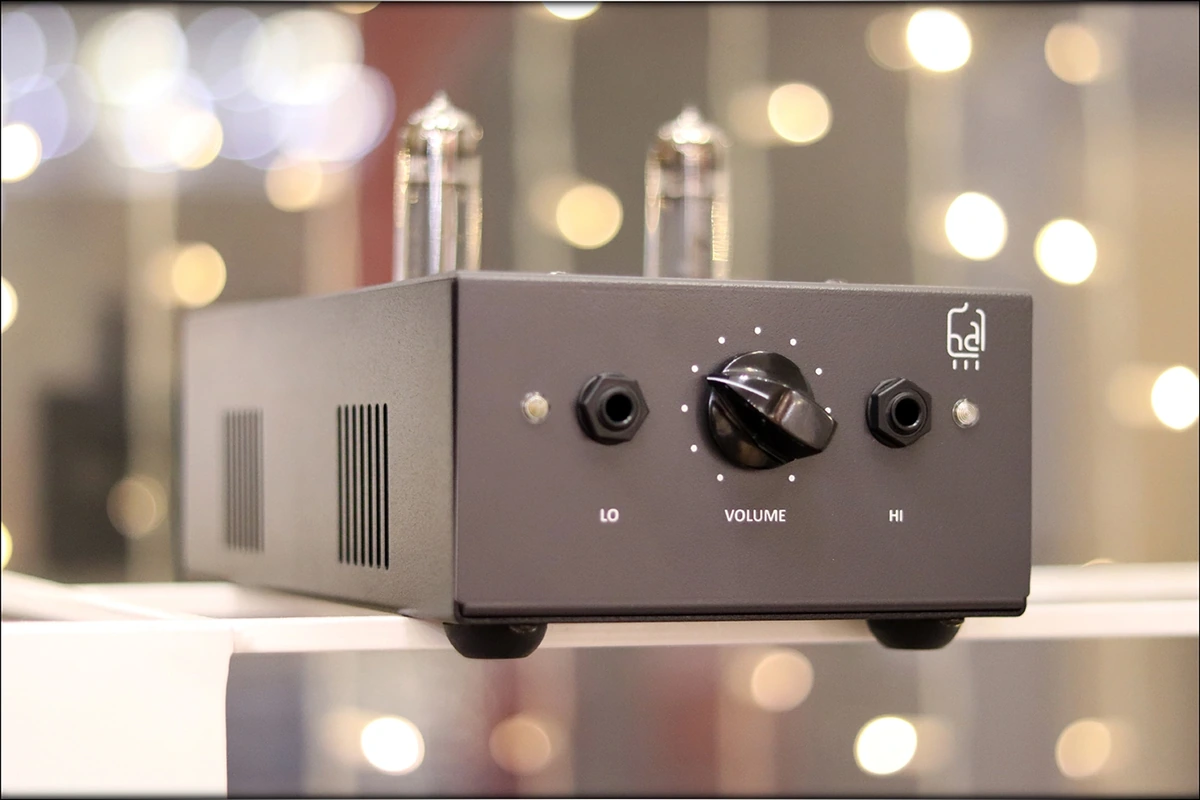
Introduction
Hagerman is a slightly different company than you standard audiophile production centre, basically a one-man company, based in Honolulu, and the Director, Mr. Jim Hagerman has a real taste for guitar pedals, being one of the best tube-based pedal manufacturers in the entire world. Since he has been so close to real music production, he has good knowledge of how music is supposed to sound like, and his amplifier, the Tuba is a unique Hifi AMP made especially for a few select headphones. It isn’t exactly made for IEMs or portable earphones, but Mr. Jim will happily provide help to you if you want to reach out to him, he has excellent knowledge, and will recommend you exactly what you require to have the best experience possible with his products.
It should be noted that I have absolutely no affiliation with Hagerman. I’d like to thank Jim Hagerman for providing the sample for this review. This review reflects my personal experience with Hagerman Tuba Amplifier. Every opinion expressed is mine and I stand by it, the purpose of this review is to help those interested in Hagerman Tuba Amplifier find their next music companion.
Product Link
You can always get the Tuba Amplifier from here: https://hagerman-audio-labs.myshopify.com/products/tuba-vacuum-tube-headphone-amplifier
Packaging
First things first, let’s get the packaging out of the way:
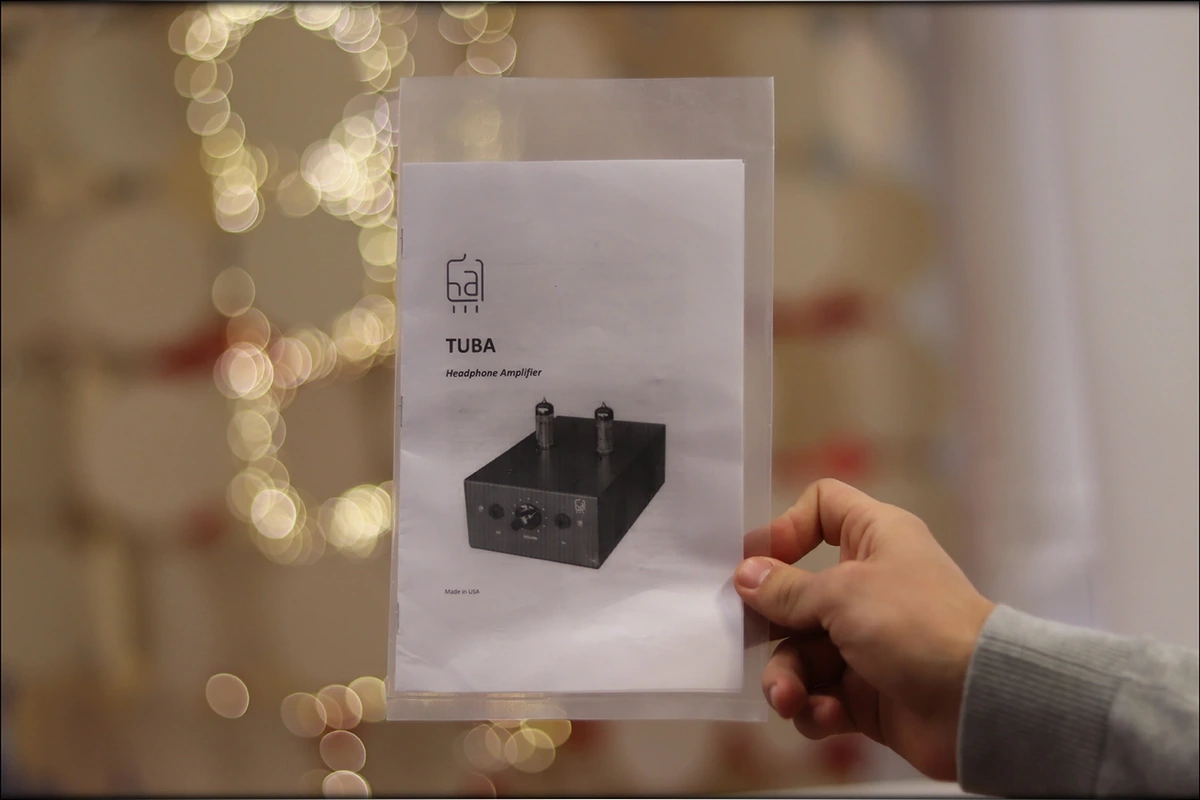
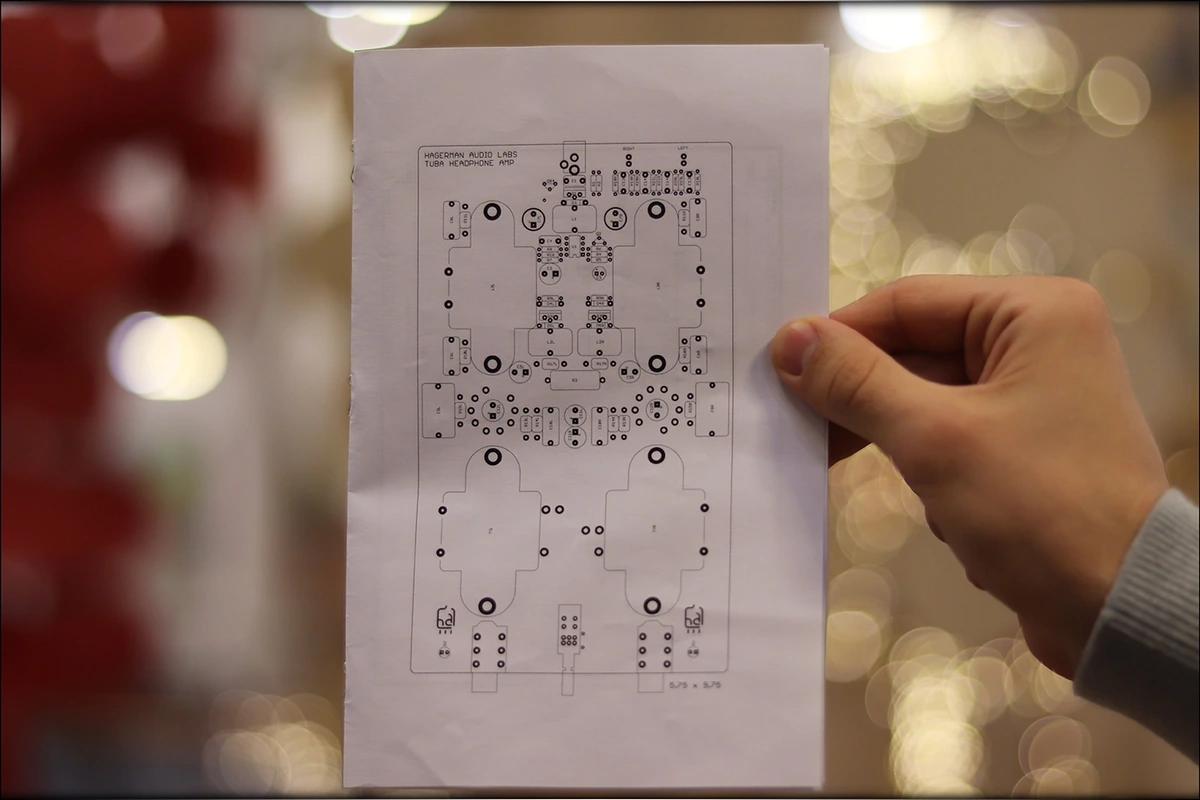
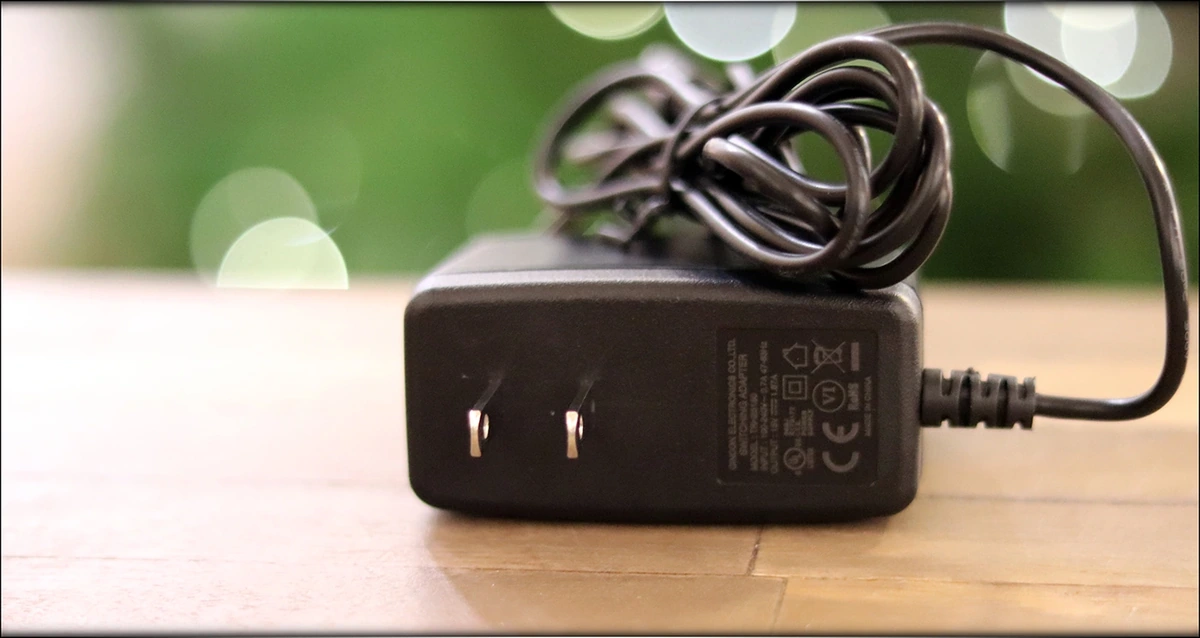
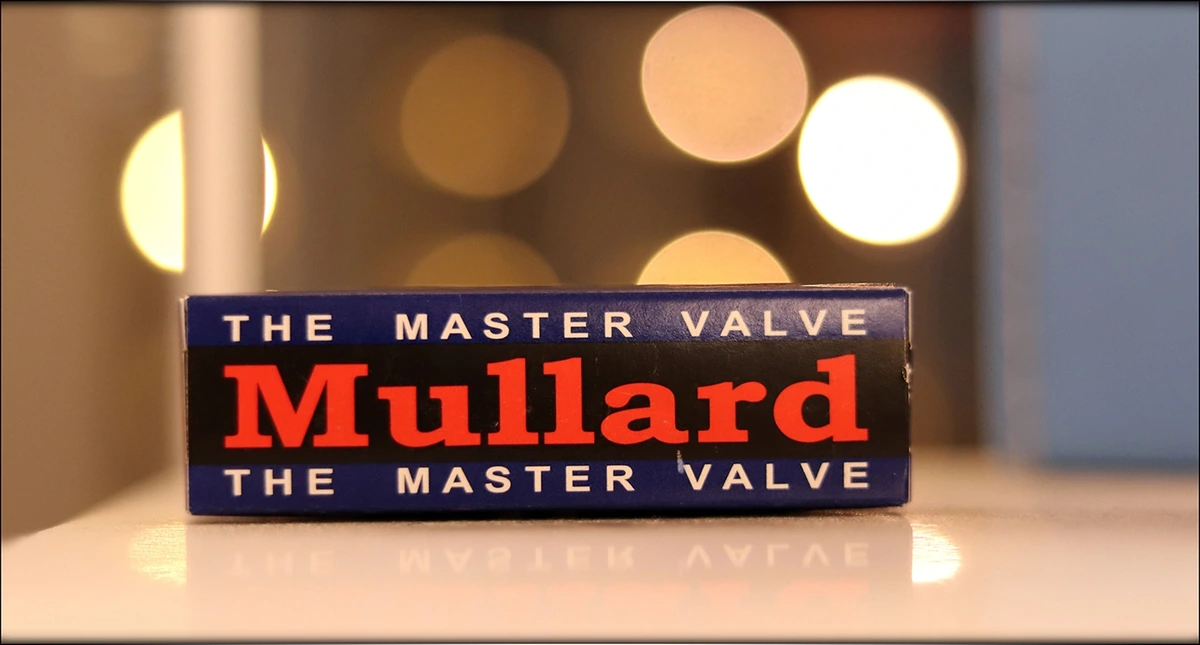
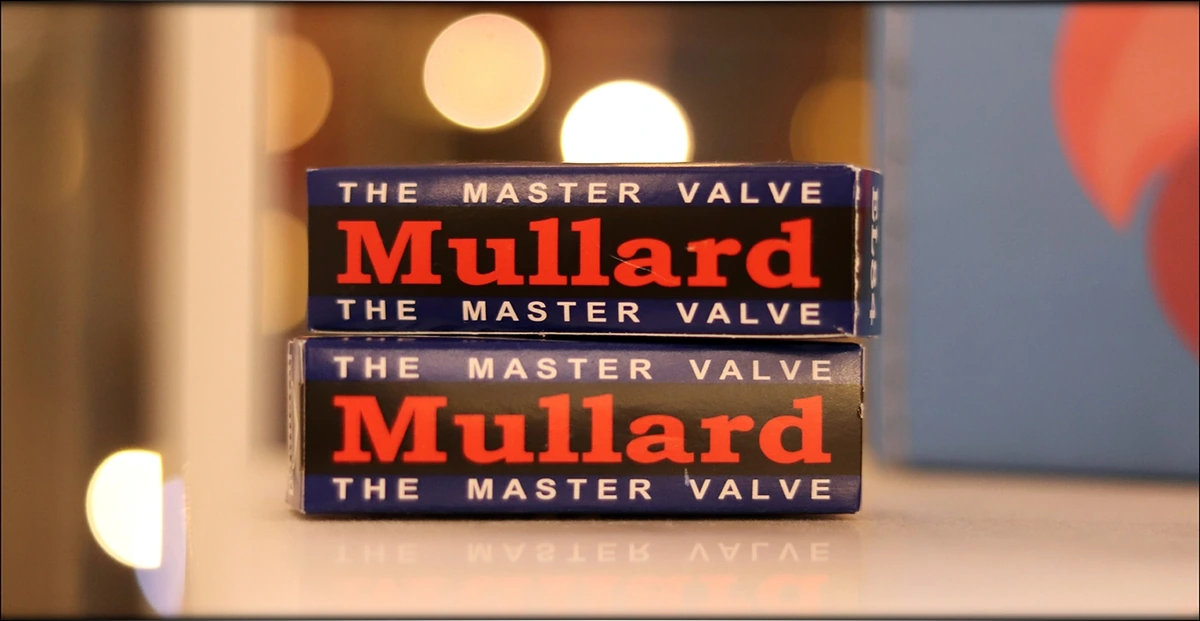
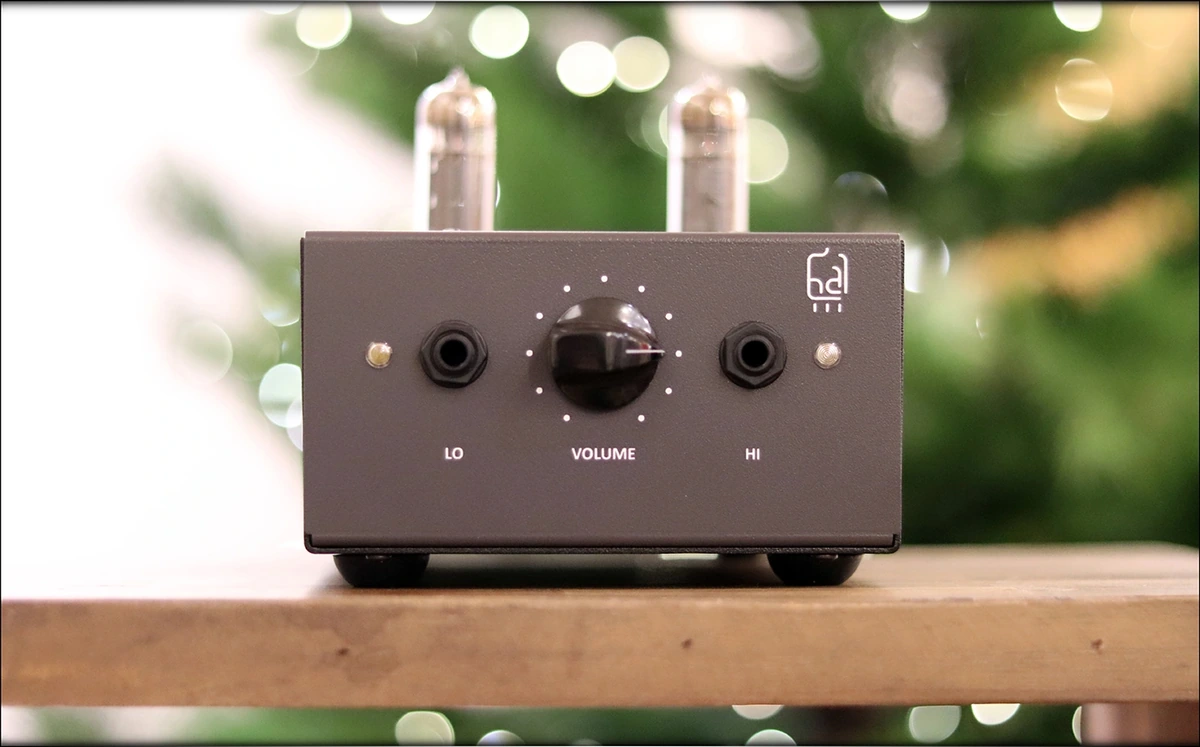
The package this time around is not quite that interesting, but has excellent protection, and the newest units ship with foam cutouts. I had a good time reading the AMP diagram, and it comes with two solid EL84 tubes, which you have to install yourself, which I also consider a pretty satisfying experience.
You receive a good amount of paperwork. The AMP is not user serviceable, as in, it doesn’t really have many components that you may need to replace yourself, but the tubes are something you can replace, and roll (try other variants on the market with the Tuba).
Sadly, the power adapter is not good for Romania, and I had to dig up an adapter, the review unit came with an UK power plug (if I’m not mistaken), and since I didn’t have anything on hand that would have the same power output, I had to improvise a bit.
All in all, at 650 USD, the package is good, similar to what Feliks Echo comes in, but slightly less impressive for the packing of the device itself.
What to look in when purchasing a midrange Headphone Amplifier
https://www.audiophile-heaven.com/p/what-to-lookl.html
Technical Specifications
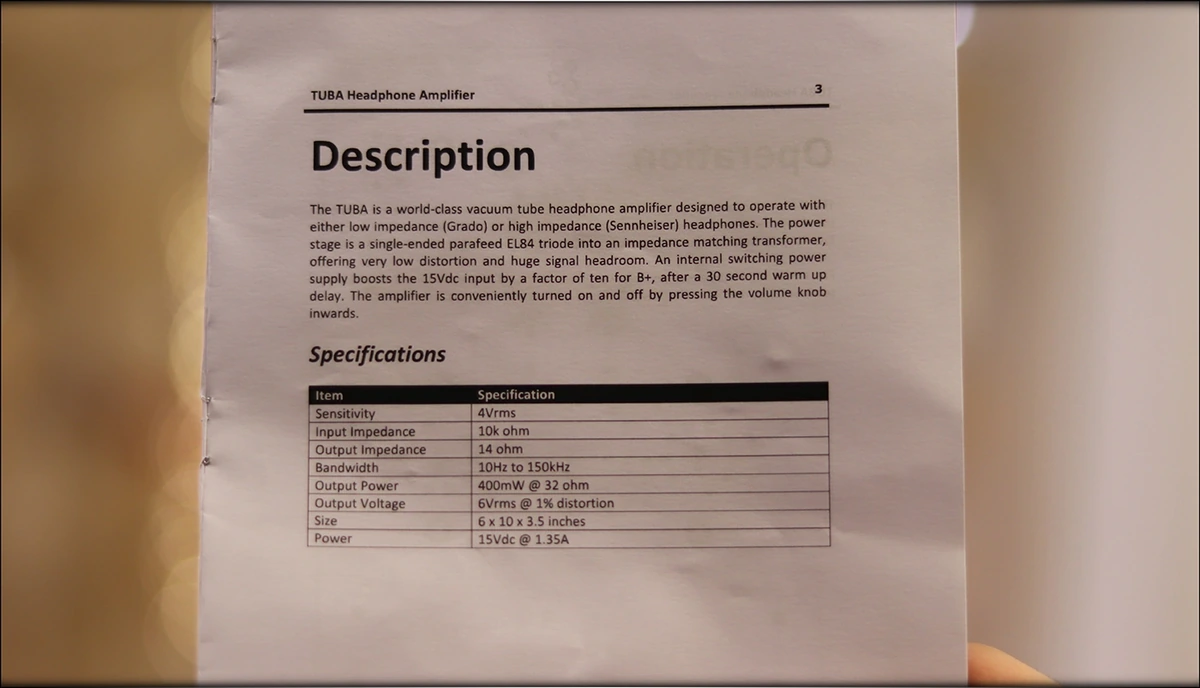
50k ohm input impedance
5/35 ohm output impedance (LO/HI)
10Hz to 150kHz bandwidth (-3dB)
350mW output power @ 32 ohms
7Vrms output voltage (HI)
6dB gain (HI)
3.5Vrms input sensitivity
0.25% distortion @ 0dBV 400Hz
6 x 10 x 3.5 inches
7 pounds
15Vdc @ 1.35A
EL84 x 2
Includes power supply & tubes
Free shipping!
Build Quality/Aesthetics/Functionality
I made two videos about the Tuba AMPlifier, but neither isn’t exactly what I truly discovered after giving it enough time to reveal its true colors, so let’s begin with the beginning.
The build quality is okay on my unit. It looks like the version with wood in the build is much better, but my simpler, metallic version feels sturdy, is metallic, but has no glamour and no fashion flair, it is a very simple, useful, industrial-looking amplifier. I already know the EL84 from Mullard Tubes from many other AMPs tested, and which are running on the same Tubes, and thus I already know that you can tune an AMP to sound however you want from those tubes, but I never expected that someone would be able to get such a unique combination of traits out of them.
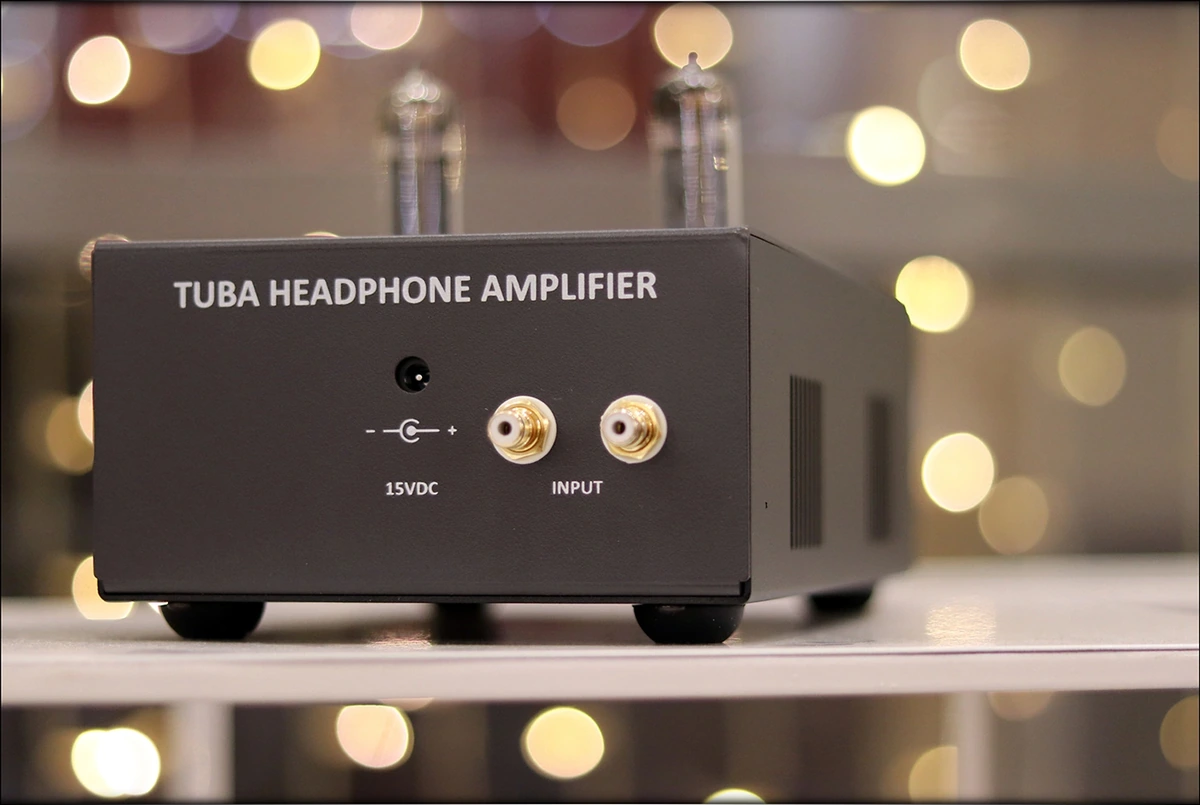
At the back of the unit, you have the RCA inputs, which are gold-plated, and which feel and look very high-quality. Next to them is the power input, and you need the power converter that came with the unit to use the Tuba. Happily, the power brick works with both EU and USA outlets, any voltage will do, but the bad part is that it has the UK shaped plug, and I needed to source an adapter which took weeks during the quarantine, and it is a big part of why my review has been delayed so much.
After you get over all the hurdles, you need to decide on a DAC to use with the Tuba, and I went with Mytek Brooklyn DAC+, M2 Tech Young MK III, Aune S6 PRO, Topping E30, and Pro-Ject Pre Box S2 Digital to run multiple tests on how much of an impact the DAC has, and what kind of DAC does the system like the most.
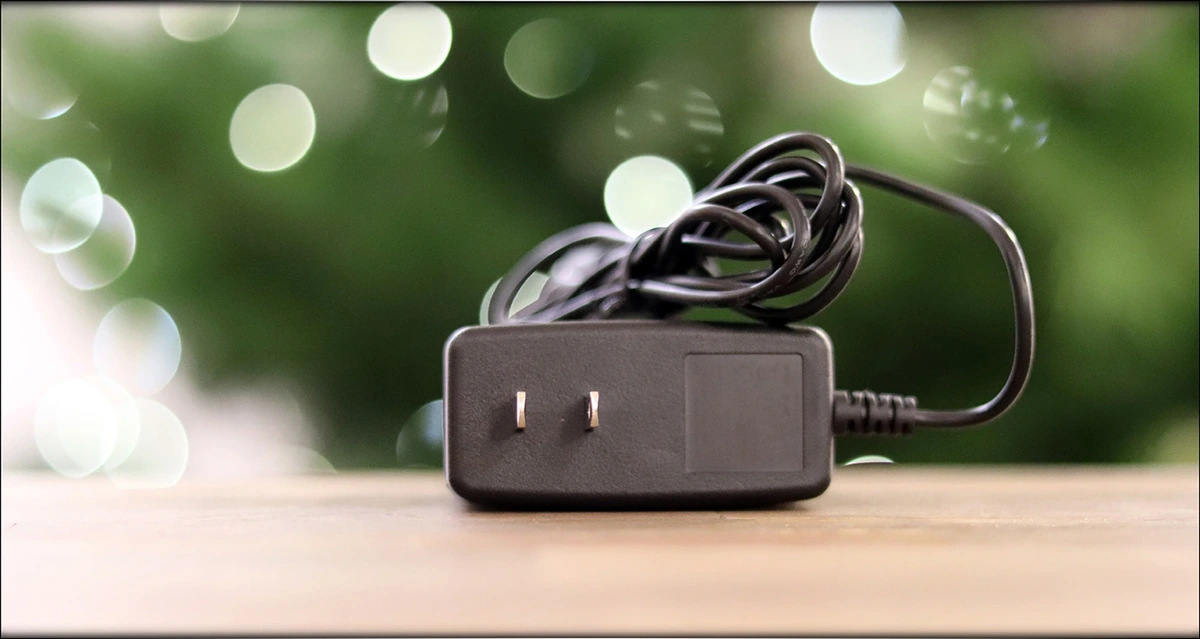
On the build part of the device, it has two headphone outputs, both in the 6.3mm large format, made for larger headphones, and both of those have a slight hum to them, which has a very constant loudness. It can be audible at really low volumes, but it quickly drowned by the music at loud volumes. Tuba is really made for hard to drive, high-impedance headphones, and if you’re using a low-impedance headphone, the hum will be somewhat louder and constant. It is a bit louder on the high gain output, and following my experience with the Tuba Amplifier, I came to the conclusion that I mostly recommend using the low gain headphone output, it sounds cleaner, more crisp, has better detail and less distortion. I also should mention that my current setup doesn’t have a proper grounding, and if you have a better setup, your experience may be that there’s no such a thing as a hum to it, so results may vary about it.
There are two tube sockets at the top, and tube rolling is possible, but if you ever heard an EL-84 from Mullard, you’ll know you’ll need no tube rolling ever , you’ll just want replacement of this amazing, tiny piece of tube.

The volume wheel is very easy to turn, has some wiggle, and needs to be pressed to turn on the unit. While some people may not like a fully analogue volume wheel, if you ignore the wiggle, it is pretty useful, and I actually came to like it after using the Tuba for a while.
All in all the unit is not bad at all, and I’m enjoying the usage, and having it on my desk, despite the little inconveniences in using it.
Video Reviews
https://www.youtube.com/watch?v=dgjqvC-ixos
https://www.youtube.com/watch?v=O_aqCZNyTpI
Sound Quality
Since I complained a lot, but my overall attitude towards the Tuba is positive, it must sound great, right? Heck yes! It sounds amazing by every definition, it is simply musical, but without losing any detail, and without being too smooth in the treble, or having a rolled off bottom.
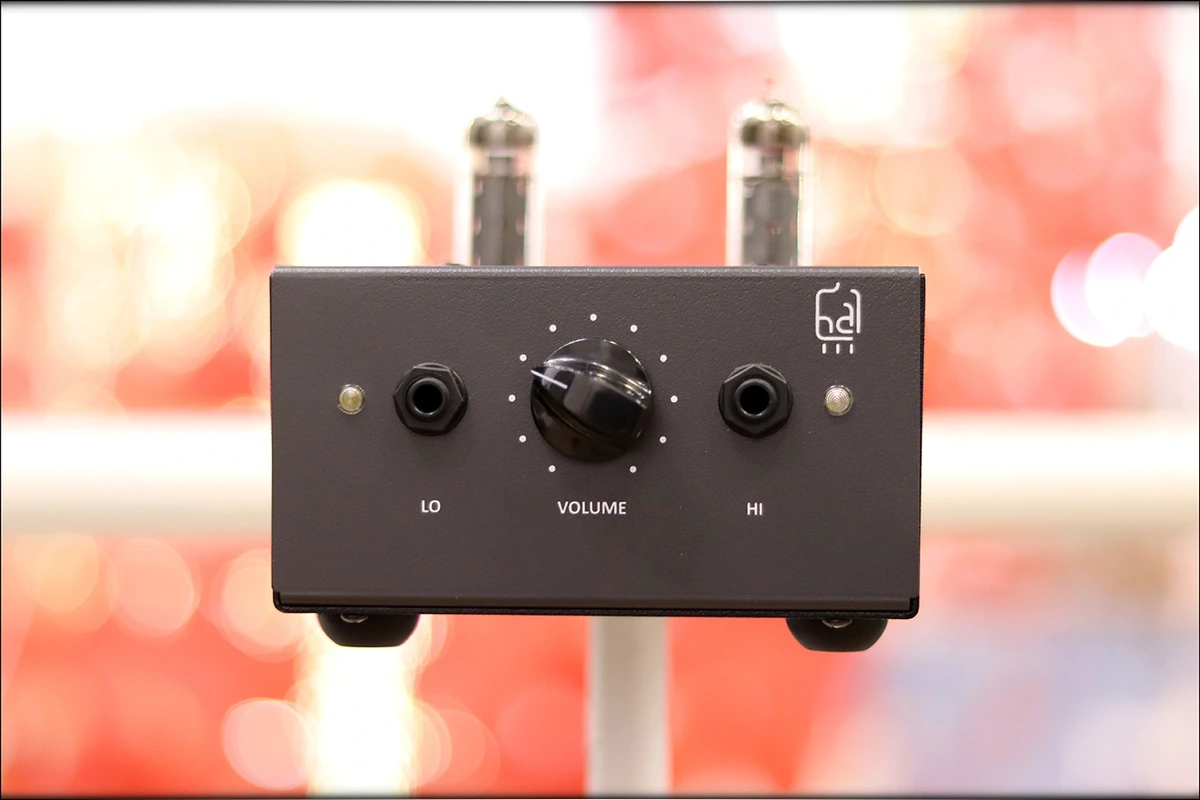
In fact, the way I would describe the sound of the Tuba, especially with matching headphones, from the low gain output, is clear, crisp, musical, colorful and vivid, with excellent dynamics and a wide soundstage. It has that analogue magic that people talk about, and instantly switching between it and something that’s digital sounding, and is fully solid state, you really hear that analogue magic everyone raves about. I haven’t been as much of a believer as I am now, after having been in quarantine for so long that I had the time to really test and play with things. And the Tuba really shows the beauty of how analogue music should sound like, why vinyl lovers go for vinyl, and why music recorded on analogue formats was and will always be more musical, and more pleasing to the ear.
But we’re getting too far ahead of ourselves here, and we should start from the base, or rather from the bass, which is deep, but also not overly enhanced. In fact, if you’re looking for a thick presentation, the Tuba won’t be it, and the bass is mostly neutral. The speed is natural, and it never gets too quick, but doesn’t lag behind either, being the natural speed type. This being said, it has a soft texture, but that doesn’t stop it from being punchy and deep-sounding when the song calls for it. Especially on songs like “Eminem – Without Me“, you can hear that the bass has a natural speed, and a softer texture, but it doesn’t lack depth or impact. On the other hand, the bass is especially good for more natural songs, Jazz and Classical, but also for Pop and Voice-Driven Songs.
The midrange is the strong point of the Tuba, and I mean, the entire sound is the strong point, but the mids are in particular too good to not call the headline of the sound. The texture is softer, but the analogue-sweetness is the easiest to notice, especially if you go from something fully solid-state to the Tuba, you can hear a magical, almost ethereal sweetness in the mids, but also a warmth that’s really welcome, if you’re listening to basically anything rock, metal, pop, jazz. It doesn’t work quite as well for EDM, because a digital-ish presentation can come off as more revealing, has more textures, Tuba’s strong point is the musicality, not the detail per se. This being said, for the 650 USD price point, we’re talking about a detail level that is as good as Aune S6 PRO, which is outstanding, but also about the sweetness of Feliks Echo, combined with the punch and soundstage presentation of Mytek Brooklyn DAC+. It’s like the best of all worlds, but I should warn you, it is not exactly perfect. The soundstage is really wide, but it is flattened in terms of depth, the instrument separation is exceptional, but the layering is less interesting than the holographic feeling Tuba has. For songs like “Stromae – Tout Les Memes“, you can hear that there’s an exceptional spatial positioning, and also a great deal of clarity, with natural, sweet voices and instruments.
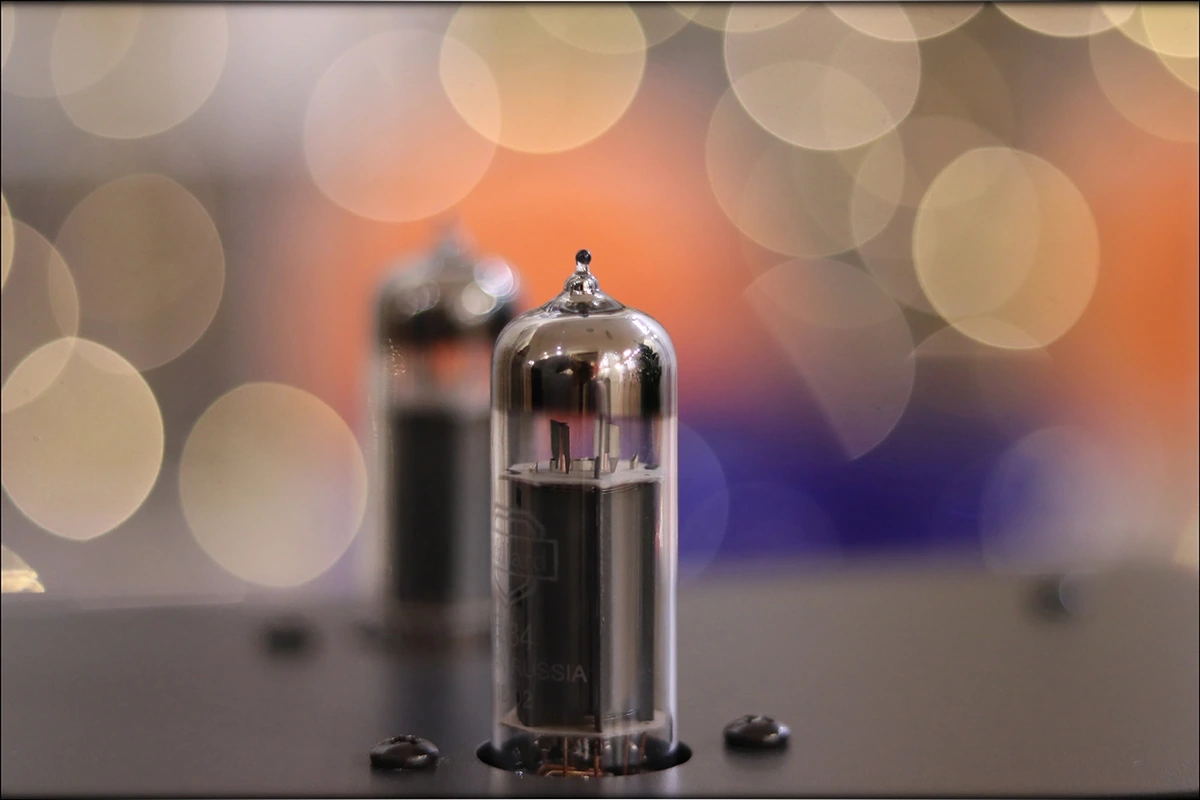
The treble would be Tuba’s weakest, or strongest point, depending on your tastes. It ain’t exactly the type of AMP that has a rolled-off treble, to make up for the lack of detail, nor does it add unnatural resonance to emulate detail, but instead Tuba has high-quality detail, that matches the price, and the treble is very natural. It is also a bit soft and relaxed, and Tuba in general does not sound aggressive or exceptionally forward, rather the sound is musical and places the fluidity above ultimate texture and detail. Oddly, I love this presentation, and especially after being a bit stressed from all the quarantine and having work to do indoors at all times, this came as a true soothing experience, and the Tuba made many weeks considerably warmer and more fun, taking away all the stress I was getting from the entire situation. It won’t be for you if you want an aggressive presentation, but “Judas Priest – No Surrender” sounds sweet, and I love the solos, along with the natural voices. The cymbals are not the most aggressive ones, but that means the song is relaxing and not one bit fatiguing, and something which helps me rock out to Judas Priest is a total win in my book.
The dynamics are also top notch, along with the overall clarity. A sound that’s a bit soft, but warm, musical and which you can enjoy for many hours in a row.
Desktop Usage
Tuba is a desktop device, and that is the end of the discussion. It is actually not that great as a desktop device, because it needs quite a bit of space, it is a bit heavy, and you need to clear the top, so that the tubes can cool off. Never touch a running tube, and let it cool down before removal, unless you want to bet the removal won’t happen to your fingers.
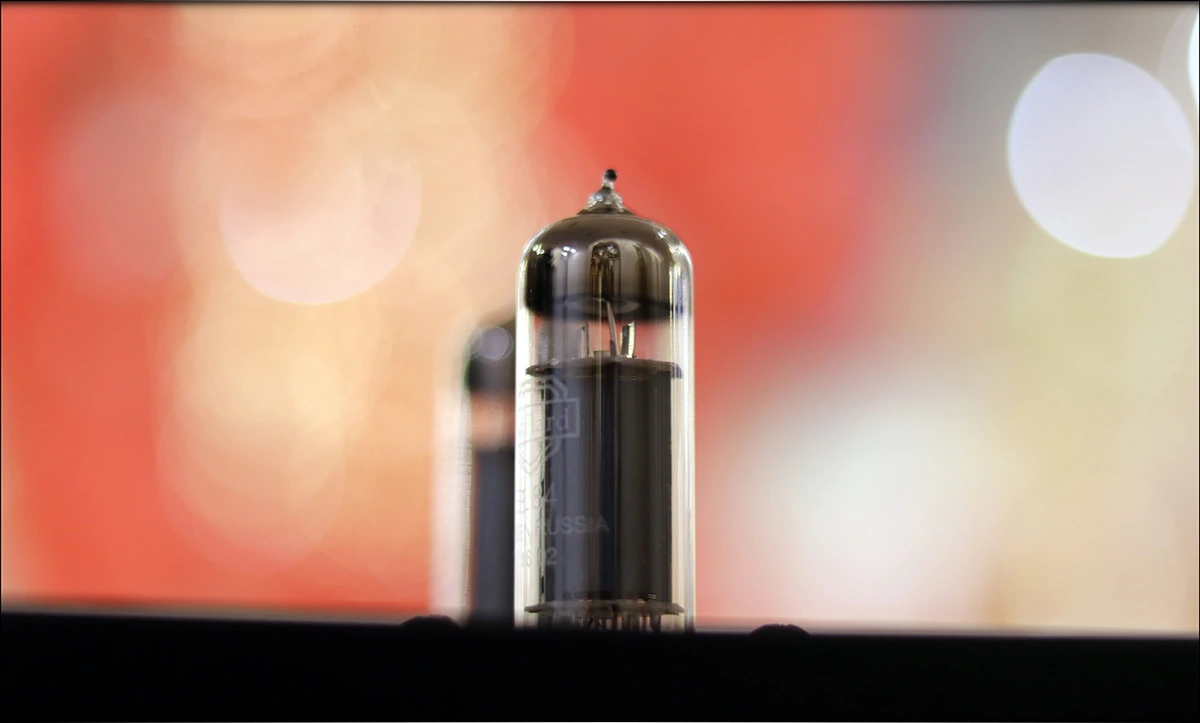
The good part is that the feet have rubber and it really doesn’t slide on your desk, but the design is not appealing for most desk users, and I suggest asking for the version with wood and investing in it, or pairing the Tuba with a desk that has mostly gray, or black devices, as it would fit quite well there.
You can place it on top of a DAC, as most DACs are really cold to the touch while they work their magic, and you could place it beneath a desk, as long as it had enough space to breathe and cool down. In fact, the device has a lot of breathing holes, and it was designed with purpose in mind, the only main complaint I have is that it is not quite as much of a looker as Feliks Echo is, and both are pretty much the same idea of a device.
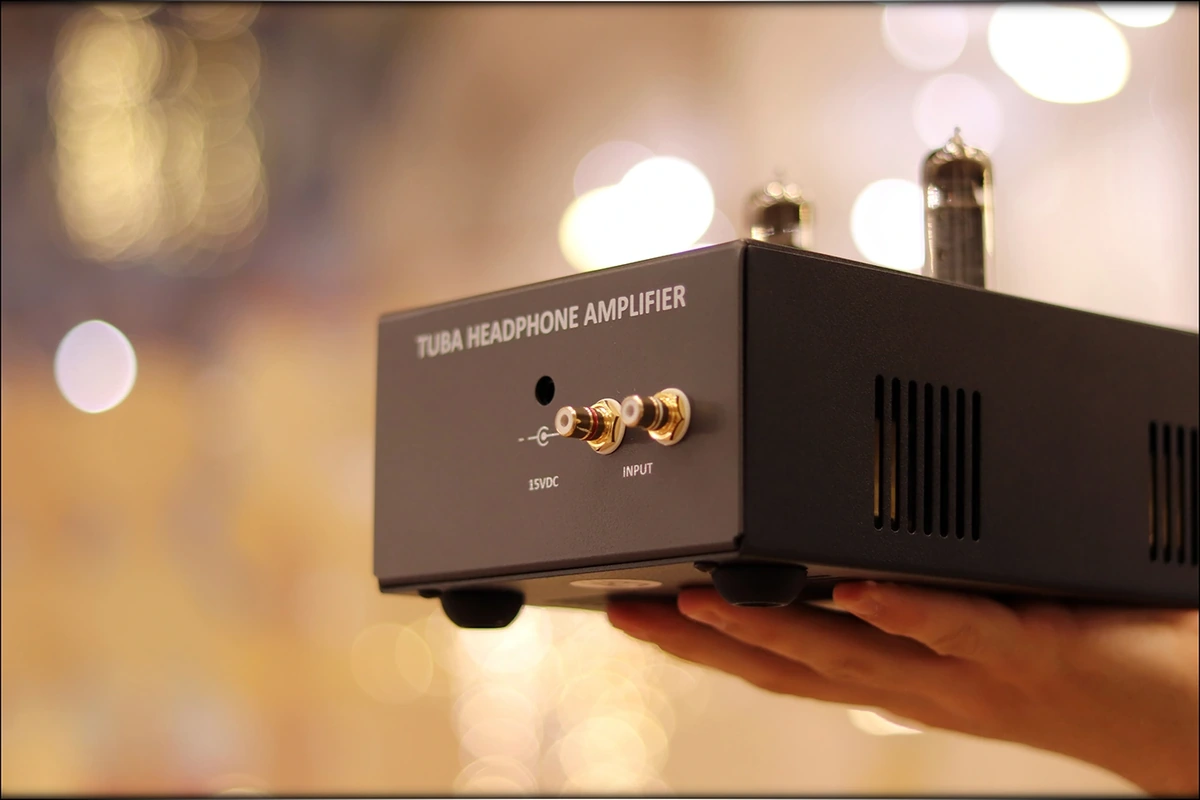
Tuba works best with natural-sounding DACs like the Mytek Brooklyn DAC+, but the more detailed the DAC is, the better the entire sound is for the Tuba, and I recommend using it with DACs that are at least the same price, as it will sound wider, deeper and more detailed with better DACs. Using high-quality RCA cables is also a great idea, and don’t forget that you could clean some of the power, if you’re experiencing a lot of distortions, and something like iFi’s AC iPurifier could help a ton.
Tuba works best with high impedance headphones, and I really don’t recommend it with IEMs like FiiO FH7, or HIFIMAN RE800 Silver, instead I recommending using it with cans that have at least 64 OHMs of impedance, and even something like Ultrasone Signature Studio sounds pretty sweet, but HIFIMAN Arya is a match made in heaven for the Tuba.
Comparisons
The main comparisons I will be making are between the Hagerman Tuba Amplifier and Feliks Echo, which is pretty much the most direct competitor from the whole world. I will also add Aune S6 PRO, given the price points of both, and also Chord Mojo, which comes pretty close in terms of pricing, being about 500 USD on amazon, with another over 100 USD to pay for shipping to Romania, which ends up costing almost the same as Tuba.
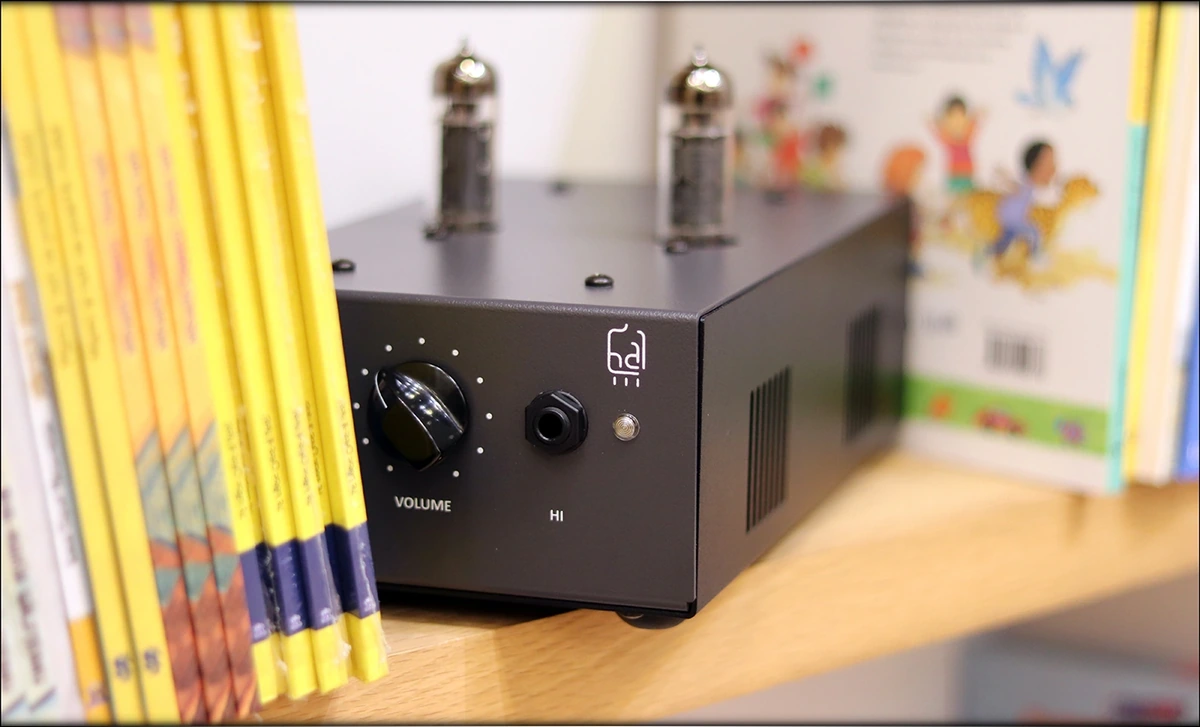
Hagerman Tuba vs Feliks Echo (650 USD vs 500 USD) – Echo has more functionality, and it also has better overall aesthetics, but also a heavier build that takes more space than Tuba. The volume wheel is better on Echo, and it feels like it was built with more attention to details, But Tuba makes up for the slightly less interesting build by having an even sweeter, more colorful, vivid and punchy sound. Indeed, this is especially when using it from the Low Gain output, which sounds cleaner, but it really sounds more controlled and cleaner, especially if you have a headphone that matches well with a more analogue-sounding amplifier.
Hagerman Tuba vs Aune S6 PRO (650 USD vs 650 USD) – S6 Pro has far more functionality and serves considerably more purpose, because it has a DAC inside too, but the sound is very digital in direct comparison to the Tuba, S6 PRO has a pretty edgy, digital-ish sounding treble, with some glare, where Tuba has a far more convincing soundstage, cleaner overall sound, it also has a more musical, analogue-like presentation. The driving power is also considerably higher from Tuba, and although it doesn’t have an XLR output, it will do just fine for hard-to-drive headphones be it planars or high-impedance dynamics, where S6 PRO will work much better than Tuba for IEMs and low-impedance headphones.
Hagerman Tuba vs Chord Mojo (650 USD vs 500 USD) – Mojo is a unique case, where it is a portable DAC/AMP, and I’m mainly adding it to the comparison list because the price is quite close to that of the Tuba, especially when you factor in taxes and shipping. The first thing I noticed about the devices was that Mojo has no noise, like Tuba, but despite it having a slightly soft and liquid sound, Tuba comes off as considerably sweeter, more colorful, wider, and quite a bit more punchy with hard-to drive headphones. Mojo is more serious, and has a less playful tone, but a more controlled sound with IEMs and easy to drive, low impedance headphones.
Pairing
You should keep in mind that the Tuba is mainly designed to work well with very high impedance headphones, and it was not designed to sound good with low impedance cans. This means that it is most probably going to sound distorted and have a pretty odd overall sound if paired with something that is less than ideal, and I seriously recommend using it more with Headphones rather than IEMs. Best pairing has been with high impedance cans like Beyerdynamic Amiron, Sennheiser HD660S and HIFIMAN Arya, for example. The main DACs I have been using throughout the review are Aune S6 PRO, Chord Mojo, Mytek Brooklyn DAC+, M2Tech Young MK III, Topping E30, and even Pro-Ject Pre Box S2 Digital. All of them work really well as DACs, and Tuba prefers a natural sounding DAC, and the more detailed the DAC, the better the entire sound is. The main pairings I have experimented a lot with have been the one with Grado SR80e, Sennheiser HD660S, and Beyerdynamic Amiron.
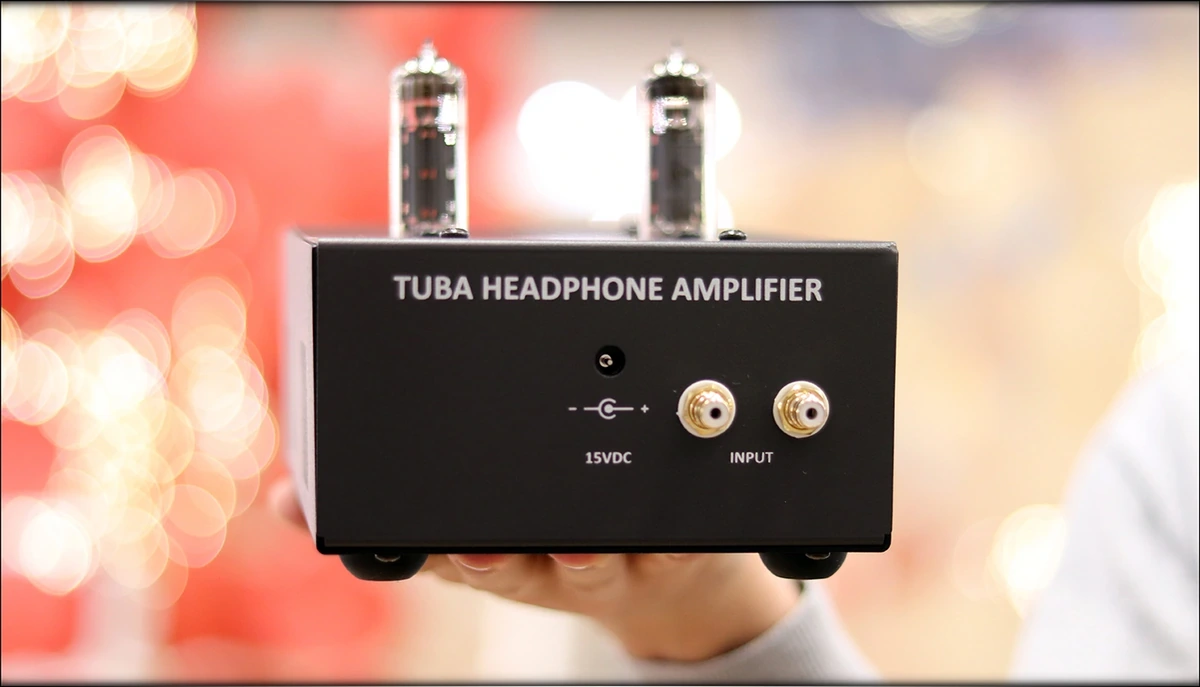
Pro-Ject S2 Pre Box Digital + Hagerman Tuba + Grado SR80e (420 USD + 650 USD + 100 USD) – Grado SR 80 e has a slightly strong treble, but Tuba actually helps with that, as it has a softer presentation, with excellent overall dynamic. This works well with SR 80e, and although I mention a slight hum in the background, with SR80e it is not audible at normal listening levels, of ~60-70 dB, and even though they have a very low impedance, compared to most of the headphones I tried the Tuba with, they still sound excellen. The soundstage has a nice width and a holographic presentation.
Mytek Brooklyn DAC+ + Hagerman Tuba + Beyerdynamic Amiron (2000 USD + 650 USD + 700 USD) – Tuba has enough driving power for it, and since Amiron was quite hard to drive, this is a huge compliment for Tuba. The sound is actually nice, because both the Brooklyn DAC+ and the Tuba are natural-sounding, and they make Amiron much more musical, and given their already good technical performance, Amiran sounds really clean and crisp out of the Tuba.
M2Tech Young MK III + Hagerman Tuba + Sennheiser HD 660 S (1600 USD + 650 USD + 500 USD) – Hd 660S always has been a bit too narrow in the stage, and a wide-sounding pairing like the Young MK III and Tuba makes it much wider, and more holographic. The treble is also fairly well-extended, and especially if you’re a fan of crispy sounds, you’ll love this one pairing.
Value and Conclusion
The value of the Tuba is not as good as that of Feliks Echo, as Tuba lacks some essential features, like having a line out, to be used as a preamplifier for a large speaker setup, but it has good build quality, when paired with the right cans, it does an outstanding job, and it has a good amount of clarity, punch, and although it only uses two very common tubes, it manages to sound really good. The value is fair, and I am looking forward to more interesting Amplifiers that have more features, but sometimes having one that does one job, but which does that job really well, can be good enough.
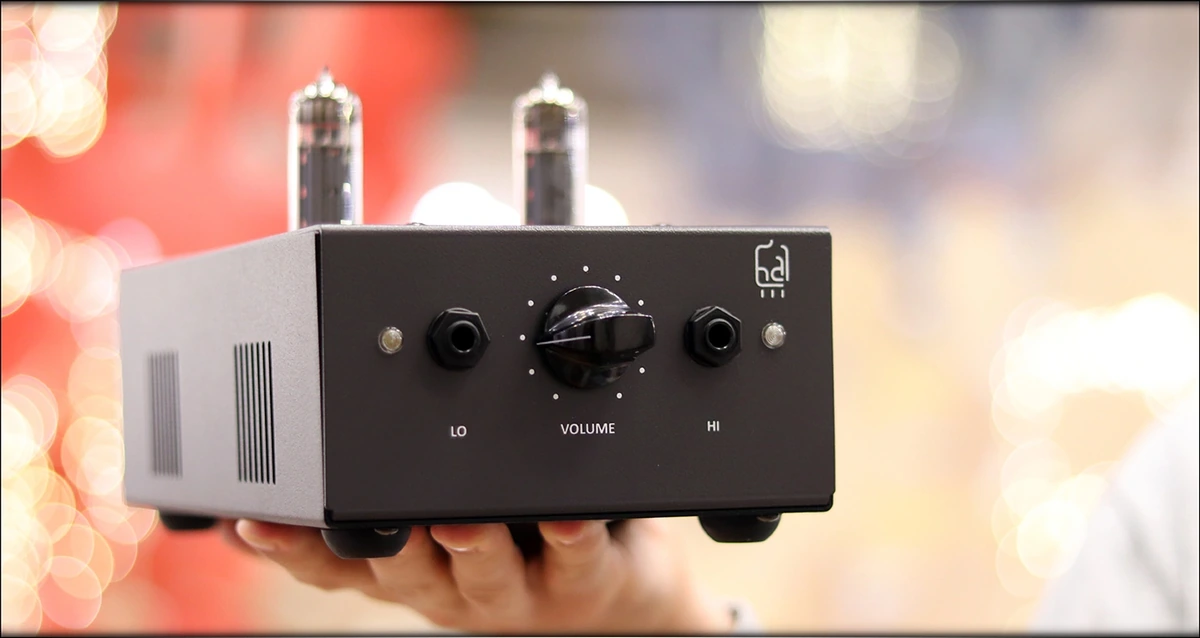
The build is great, although the volume wheel is a bit wiggly, and there is no preamp output, it does the one thing it is made to do, really well. That is being a headphone amplifier, especially not an OTL one as it has output transoformers, which is how it manages to have 5 OHMs of output impedance. It is made to drive hard-to-drive or high-impedance headphones, and for that role, Tuba is pretty darn great. Not for IEMs, but for the full size and full package experience.
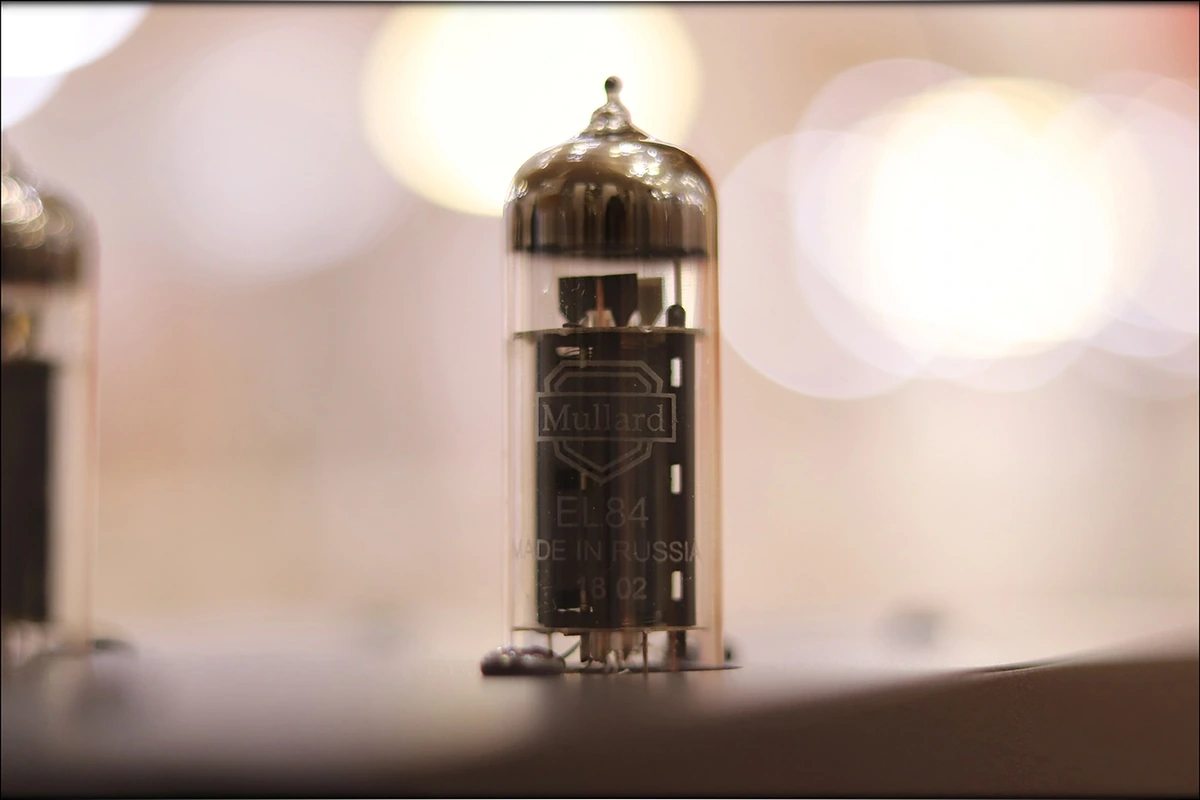
The sound is sweet, musical, analogue-like, and has good extension both in the treble, and in the bass, is dynamic, vivid and colorful, without ever being aggressive. You may actually say that it lacks some of the edge that the solid state counterparts have, but to its defense, it has such a beautiful overall presentation, you may be inclined to pardon the detriments in the technical area, when you start it and start enjoying it.
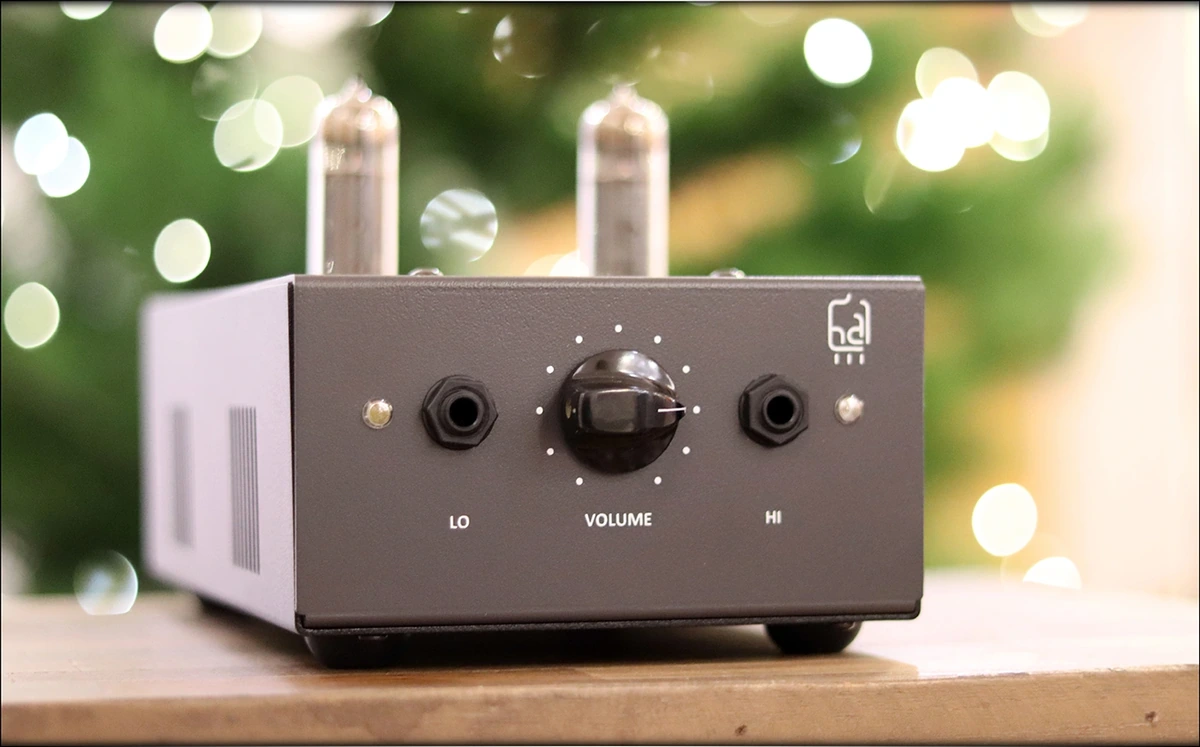
At the end of this review, if you’re looking for a high-quality Headphone Amplifier, with a slightly soft, but sweet sound, which can drive hard-to-drive and high-impedance cans, Hagerman Tuba should make a great companion, especially if you always felt like Analogue sounded better than Digital, and if you want to hear some of that romantic sound of the past in the present.
Product Link
You can always get the Tuba Amplifier from here: https://hagerman-audio-labs.myshopify.com/products/tuba-vacuum-tube-headphone-amplifier
--- Please remember to stay safe, and always have fun while listening to music!---
- If you have a dime to spare, please donate, and help us! It would make the day brighter for me and my wife-
Full Playlist used for this review
We listened to more songs than those named in this playlist, but those are excellent for identifying a sonic signature. I recommend trying most of the songs from this playlist, especially if you’re searching for new music! The playlists are different for Spotify, Tidal and Youtube, and based on the songs I enjoy and are available on each!
https://www.youtube.com/playlist?list=PL_cjBXGmwSHSdGcwuc_bKbBDGHL4QvYBu
https://open.spotify.com/playlist/5J3oloz8Riy9LxEGenOjQ0?si=979ba4f082414be7
https://tidal.com/browse/playlist/330fd544-8e5b-4839-bd35-676b2edbb3d5
--- Contact Us ---






Nice Review Bro!
Es extraordinario ir a ver este sitio y leer las opiniones de todos los colegas con respecto a esta publicación, mientras que también estoy celoso de obtener conocimientos técnicos.
Superb review!
I kept searching for reliable articles on the Tuba, and yours is the best one out there!
I ended up ordering one, based on the advice you gave me through the mails, and I want to say, people need to hear the Tuba, it is an excellent amplifier.
I love your writing style, and your photo quality! This AMP has been in my sights for a long while, hoping it will be as good as you describe once I manage to snag one
I purchased this amp solely based on your comments, and I’m really happy I did! It performs really well, has good overall build quality, and good price / performance ratio. Hope more people will check out audiophile-heaven, you have good advice here.
Really glad to see a proper review on this gem, got one a few weeks ago and I love the sonic presentation of it!
I love your entire website, George! I really appreciate that you write well and keep us all entertained, I hate too long articles that miss the point 🙂
Gracias por infonya …
I just received it today, and you’re right, it is a really sweet sounding AMP, thanks a lot!
Loving your works!
Really awesome website!